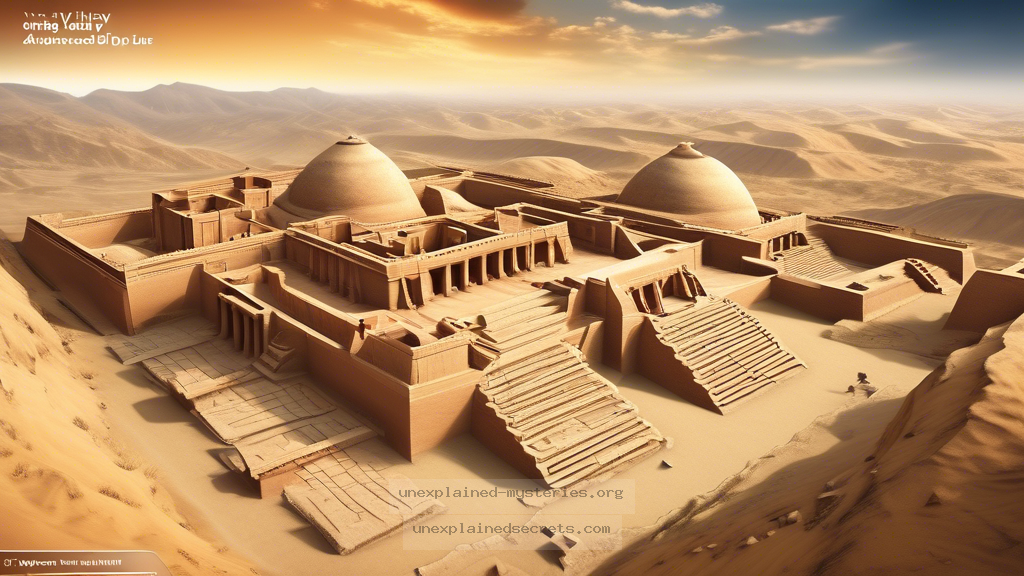What Happened to the Advanced Civilization of the Indus Valley?
What Happened to the Advanced Civilization of the Indus Valley?
The Indus Valley Civilization (IVC), one of the world’s oldest urban cultures, flourished from approximately 3300 BCE to 1300 BCE in what is now Pakistan and northwest India. Despite its remarkable achievements in urban planning, architecture, and social organization, the reasons behind its decline remain shrouded in mystery. This question matters not just for understanding the fate of the IVC but also for drawing lessons about the rise and fall of civilizations, which can resonate with modern society. In this blog post, we will explore various aspects of this ancient civilization, providing a comprehensive analysis of what might have led to its downfall.
Historical Context of the Indus Valley Civilization
The Indus Valley Civilization was an advanced urban culture known for its sophisticated city planning, including the use of standardized fired bricks, drainage systems, and large granaries. Major cities like Harappa and Mohenjo-Daro were meticulously organized, featuring grid-like streets and impressive public buildings. The civilization was primarily agrarian, with a focus on crops like wheat, barley, and cotton, and it engaged in trade with neighboring regions, including Mesopotamia.
Despite its advancements, the IVC is enigmatic; much of what we know comes from archaeological excavations, as the script used by the Indus people remains undeciphered. This lends a layer of intrigue to the civilization’s disappearance, as scholars can only hypothesize about its collapse based on archaeological evidence.
Theories on the Decline of the Indus Valley Civilization
Several theories have been proposed regarding the decline of the Indus Valley Civilization, and they can be classified into environmental, social, and economic factors. Let’s explore some of the most prominent theories:
- Climate Change: Researchers suggest that a significant shift in climate could have led to droughts, affecting agriculture and water supply.
- River Shifts: Changes in the course of the Indus River system may have resulted in flooding or reduced water availability, disrupting urban centers.
- Invasions: Some historians argue that invasions by nomadic tribes contributed to the decline of the IVC.
- Internal Conflict: Social strife or conflict within the civilization may have weakened its structure, leading to collapse.
Environmental Factors: The Role of Climate Change
One of the most compelling theories involves environmental changes, particularly climate change. Paleoclimatic evidence indicates that the region experienced a series of monsoon failures around 2000 BCE, leading to prolonged droughts. This would have severely impacted agriculture, which was the backbone of the IVC economy. As crops failed, food shortages could have led to social unrest and migration.
Archaeological evidence supports this theory; studies of sediment cores in the region indicate a marked shift in vegetation and soil composition corresponding to this period of climate change. The changing environment would have made it increasingly challenging for people to remain in densely populated urban centers.
Socio-Political Factors: Internal Conflict and Governance
The social structure of the Indus Valley Civilization is still a subject of debate among historians. Some scholars suggest that the civilization may have had a centralized form of governance, while others argue for a more decentralized, egalitarian society. If internal conflicts arose—due to resource scarcity or social stratification—it could have led to unrest and weakened the civilization’s ability to respond to external threats.
For instance, the discovery of fortifications in some IVC cities implies a need for defense against potential invasions. This could indicate that the civilization faced external pressures, perhaps exacerbated by internal strife. If the leaders were unable to maintain control and provide for the populace during times of crisis, it could have hastened the civilization’s decline.
Economic Factors: Trade Disruptions and Resource Management
The IVC was a hub of trade, with extensive networks connecting it to Mesopotamia and other regions. However, changes in climate could have disrupted these trade routes, leading to economic instability. As agricultural yields declined, so would the surplus that supported trade, creating a feedback loop of declining wealth and resources.
Additionally, archaeological findings suggest that some cities experienced a decline in urban infrastructure, such as the deterioration of drainage systems and public baths. This deterioration may indicate a failure to maintain economic and social order, further contributing to the civilization’s decline.
Alternative Perspectives: The ‘Peaceful’ Decline Theory
While many theories focus on collapse due to conflict or disaster, some researchers propose that the decline of the Indus Valley Civilization may have been a more peaceful transition. This perspective suggests that as environmental conditions changed, populations gradually migrated to more hospitable areas instead of facing a sudden collapse. This would imply that instead of a catastrophic end, the IVC evolved or transformed into other cultures over time.
This theory is supported by archaeological evidence of continuity in certain regions, where elements of IVC culture can be seen in later civilizations. For example, some elements of urban planning and pottery styles persisted in subsequent cultures in the Indian subcontinent.
Common Misconceptions About the IVC
With the mystery surrounding the decline of the Indus Valley Civilization, several misconceptions have emerged:
- Misconception 1: The IVC was entirely destroyed by invasions.
- Misconception 2: The civilization disappeared overnight.
- Misconception 3: The Indus people were primitive and lacked advanced technologies.
In reality, the decline of the IVC was likely a complex interplay of multiple factors rather than a singular event or cause. Additionally, archaeological evidence indicates that the IVC possessed advanced knowledge of urban planning, metallurgy, and trade.
Best Practices for Further Investigation
For those interested in exploring the Indus Valley Civilization further, here are some best practices for investigation:
- Engage with Archaeological Reports: Reading peer-reviewed journals and archaeological reports can provide insight into ongoing research and findings.
- Visit Archaeological Sites: If possible, visiting sites like Mohenjo-Daro and Harappa can provide a tangible connection to the past.
- Participate in Academic Conferences: Attending conferences on ancient civilizations can expose you to the latest theories and research.
Future Developments: Ongoing Research and Discoveries
The study of the Indus Valley Civilization remains a dynamic field, with ongoing excavations and advancements in technologies such as satellite imagery and ground-penetrating radar. These tools are revealing new insights into urban layouts, trade routes, and even burial practices. As scholars continue to piece together the puzzle, the potential for uncovering new evidence about the IVC’s decline remains high.
Conclusion: Understanding the Lessons from the Indus Valley Civilization
The mystery surrounding the decline of the Indus Valley Civilization serves as a reminder of the fragility of human societies. While the exact reasons for its downfall may remain elusive, the interplay of environmental, social, and economic factors provides valuable lessons. By examining the complexities of this ancient civilization, we can gain deeper insights into the dynamics that shape civilizations, both in the past and in contemporary society.
As we continue to explore the ruins of the IVC and engage with its mysteries, we honor a civilization that contributed significantly to human history. The lessons learned from its rise and fall may be especially relevant in today’s rapidly changing world.
Other Articles
Recent Posts
- What Happened to Flight MH370? The Conspiracy Theories That Still Haunt Us
- What Secrets Lurk Within the Walls of the Infamous Trans-Allegheny Lunatic Asylum?
- What Evidence Supports the Existence of Bigfoot in the Pacific Northwest?
- What Happened to the Indus Valley Civilization? Unraveling the Mysteries of Ancient Urban Life
- Can Telepathy Be Scientifically Proven Through Laboratory Evidence?







